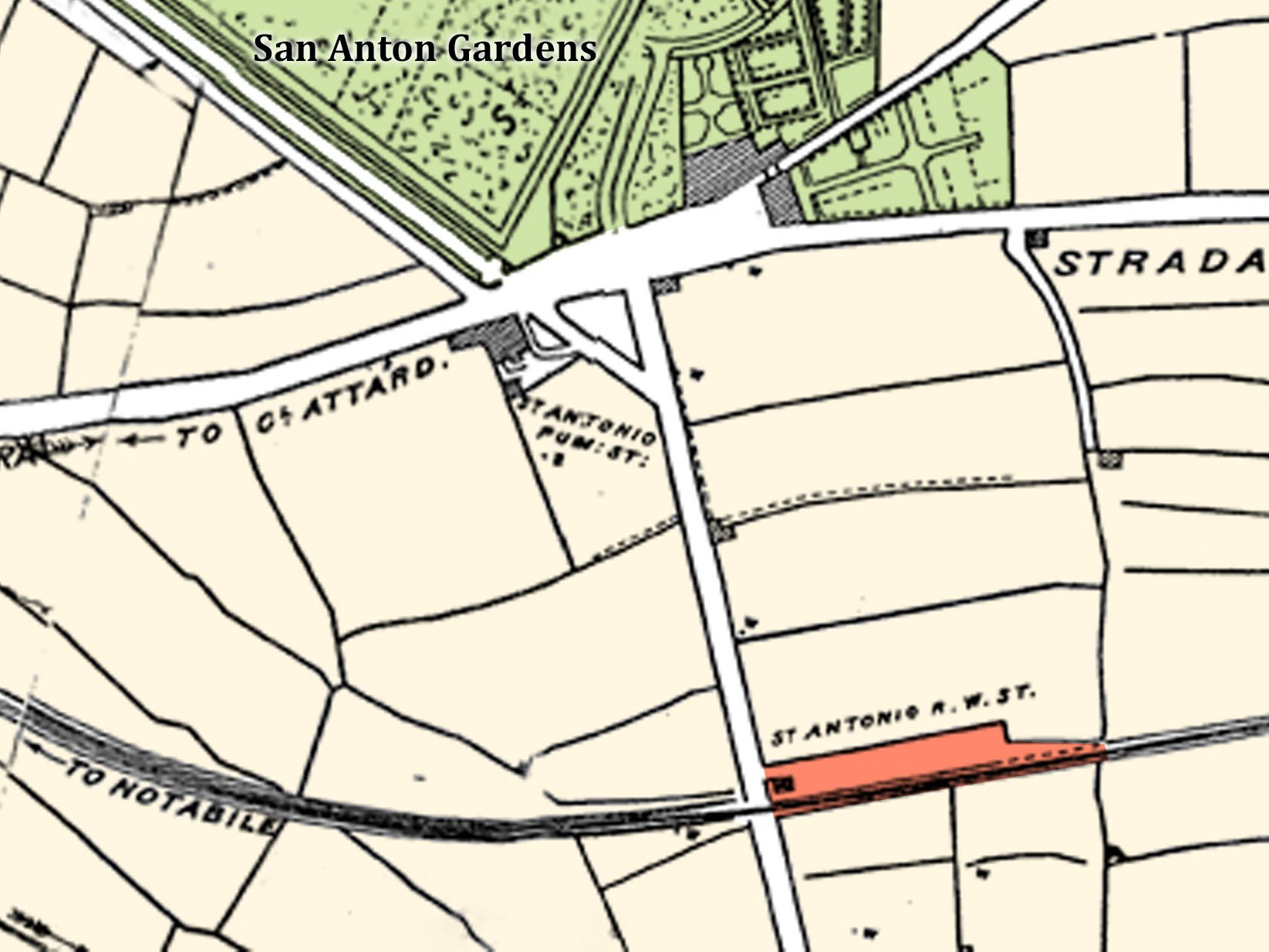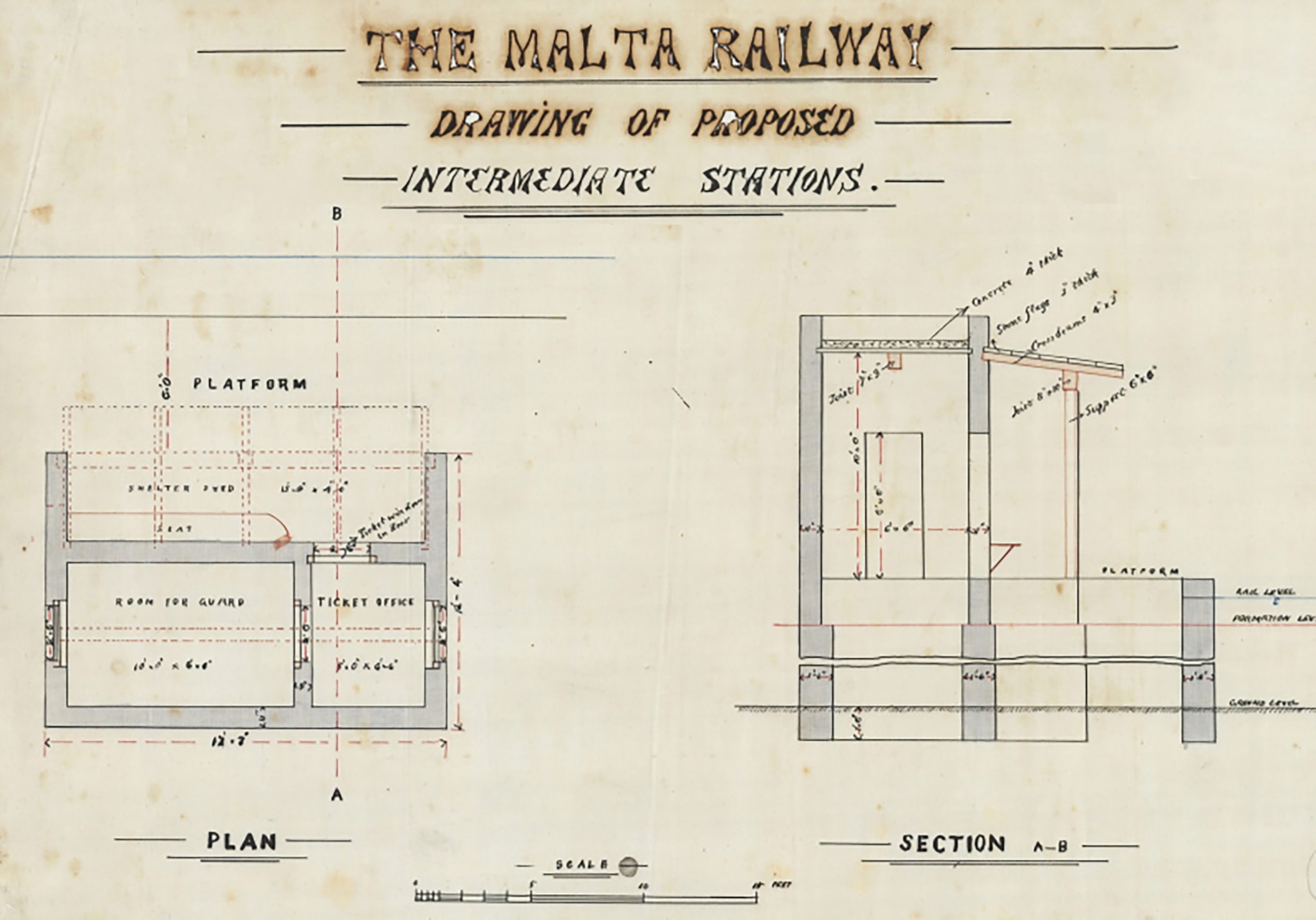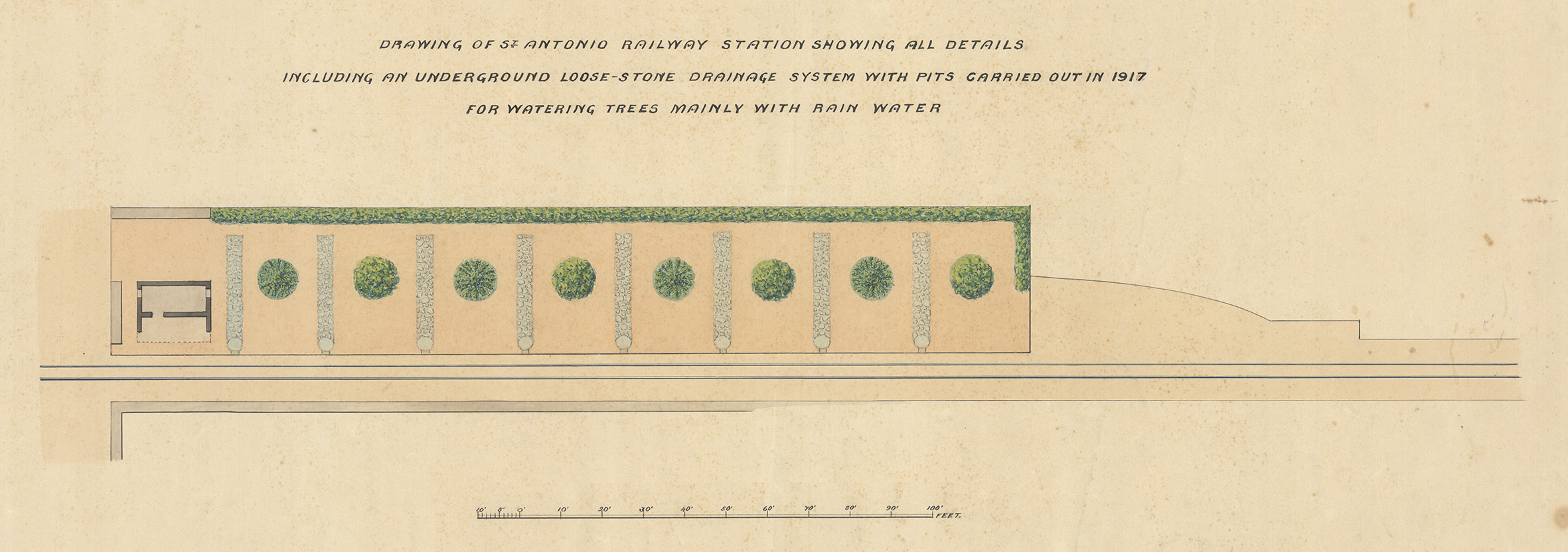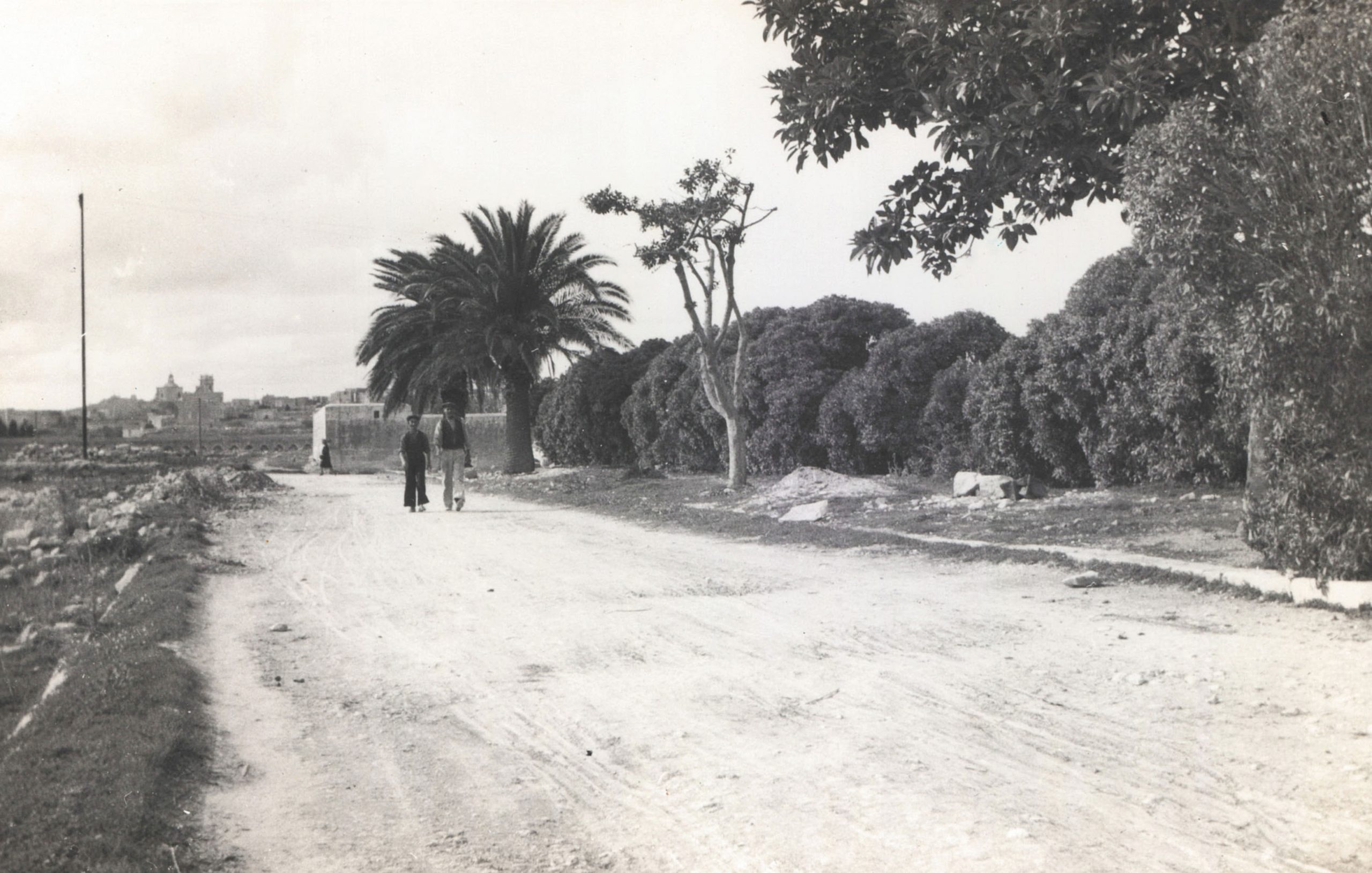San Antonio
3 miles, 65 chains – Journey time 14 mins
A platform for the palace
During the British period San Anton Palace was used by the Island’s Governor and Government officials; the Railway Company no doubt sought to capitalise on the potential of this prestigious source of revenue. A luxurious Governor’s carriage was commissioned for his exclusive use commuting, when he had to, between the Capital and his official residence. In 1882, in an unexpected boon to the railway, the lush and extensive palace gardens were opened to the public. When the railway opened the following year this, no doubt, encouraged many day-trippers to alight at the station.
The location was less than 200 yards from the entrance to the gardens, conveniently sited on the north side of the line where the road, the modern Vjal DE Paule, crossed over the tracks. Despite its anticipated distinguished use, only a standard ‘intermediate’ station was provided, one with the usual small stone building, shallow station shelter and short platform.


The station would have been at its busiest when the Governor and his wife held occasional “at home” events, when visitors would be invited to informal audiences at the Palace. For these, special trains were laid on, many being express non-stop services between Valletta and San Anton. One can imagine one of these trains arriving, its passengers alighting dressed in their finest and most expensive clothes, turning the platform into an impromptu fashion-show catwalk before processing the short distance to the palace by foot or karozzin.
Before 1917, and no doubt under the instruction of Nicola Buhagiar, the station platform was planted with a line of eight trees, alternating weeping figs and palms, as well as new perimeter oleander hedging. The shade of the trees would have been of great relief to passengers, who frequently complained about the lack of “sufficient shelter from the burning rays of the sun”, shaming San Anton and Attard particularly as “remarkable for their nudity in the above respect”.

In the final full year of operation, 1930, the station was absent from the timetable whilst all the other intermediate stops were individually named; this included the previously unofficial Santa Venra stop. It’s not clear whether this was an accidental omission or whether the station at San Anton had already been shut. Whilst the original building vanished two years after final closure of the railway in 1931 the trees and planting were left undisturbed and continued to mature; they presented a handsome sight in the 1960s when the platform edge could still be discerned. Despite later development of the area a single tree still survives today, a giant veteran weeping fig on Triq il-Ferrovia, guarding the site of the lost station.

Previous Station / Next Station
